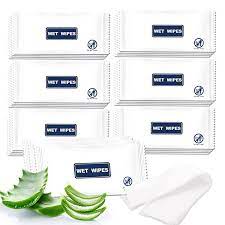In a kind of industry where having high hygiene standards is part of legal requirements, investing in ways of ensuring cleanliness plays a very crucial role. In the process of ensuring a high level of cleanliness, wet wipes for restaurant can prove to be a game changer in maintaining the hygiene standards of your space.
Types of Cleaning Wipes
As per the ability to achieve different levels of cleaning, food hygiene wet wipes are categorized based on them. These levels are decided through the strength of ingredients used in its saturation process.
Sanitizing
The process of sanitizing helps kill viruses and bacteria but may not be as powerful as compared to anti-microbial methods of cleaning. Its main objective is to decrease the number of germs on the surface rather than eliminating pathogens completely. These sanitizing wipes are saturated with solutions of antibacterial cleaning like Isopropyl alcohol which makes them ideal for high touch parts and areas that don’t have food contact directly such as counters and trays.
Disinfecting
It is a more powerful way that is used against fighting a range of bacteria, fungi and viruses.
Disinfectant wipes are saturated with powerful cleaning agents like QUATs, Isopropyl alcohol or peracetic acid.
Instead of using it on surfaces with food contact, it is best to use it on utensils, mixing equipment or worktops. They are very well designed for specific use on surfaces that don’t have direct contact with food.
They are saturated with the solutions of food grade disinfecting to ensure that they don’t contaminate the ingredients.
Sterilizing
It is the most powerful form of cleaning and killing viruses, fungi and spores. Its use is very common in medical environments and is not ideal for surfaces with food contact.
Disinfectant Wipes vs using Sprays and Cloths
You should judge all restaurant wet wipes based on their capability to contribute to the maintenance of safety and food hygiene standards without affecting overall customer satisfaction.
Due to the wide range of challenges faced by the food business, it can prove difficult to identify the perfect balance. In the past, the fusion of cleaning cloths and sprays was popular. It is one of the most cost-effective ways of cleaning but it doesn’t make it a reliable way in the maintenance of cleaning standards.
To support this, there was one study that was published in the American Journal of Infection Control which suggested that the use of disinfectant wipes is very effective at reducing the possibilities of contamination as compared to the use of separate solutions.
Although both products have their advantages and disadvantages, if we look holistically, the use of wipe cleaning offers you an efficient way to meet all the hygiene standards and also makes the process of cleaning more easier and without affecting the customer experience.
Pros and Cons of Using Disinfectant Wipes
Let’s understand both sides of using custom wet wipes for restaurants.
Pros
- It is convenient and very easy to use as you don’t have to mix it with any solution
- You can use it on various kinds of surfaces
- It has an efficient kill rate of microorganisms and no additional sanitizing is required.
- It is much more hygienic than clothes if you dispose of it after every use
- It offers you a professional appearance as there are no bad odors
- They are 100 percent food safe wipes
Cons
- It may not quickly cover large areas of surface
- It can quickly dry out if you don’t store it properly
- In the long run, it may not be cost-effective as compared to the use of clothes and sprays
- If you don’t use it properly, it may lead to overuse of it
- It may not be an eco friendly option if they are not disposed of properly
To add wet wipes to your hygiene practices, it is crucial to contact a professional private label wipes manufacturer to ensure high quality of product. Disinfectants that have the mark of “food safe” are an ideal option as they don’t involve any QUAT solutions or any kind of chemicals that will contaminate the food.





Comments